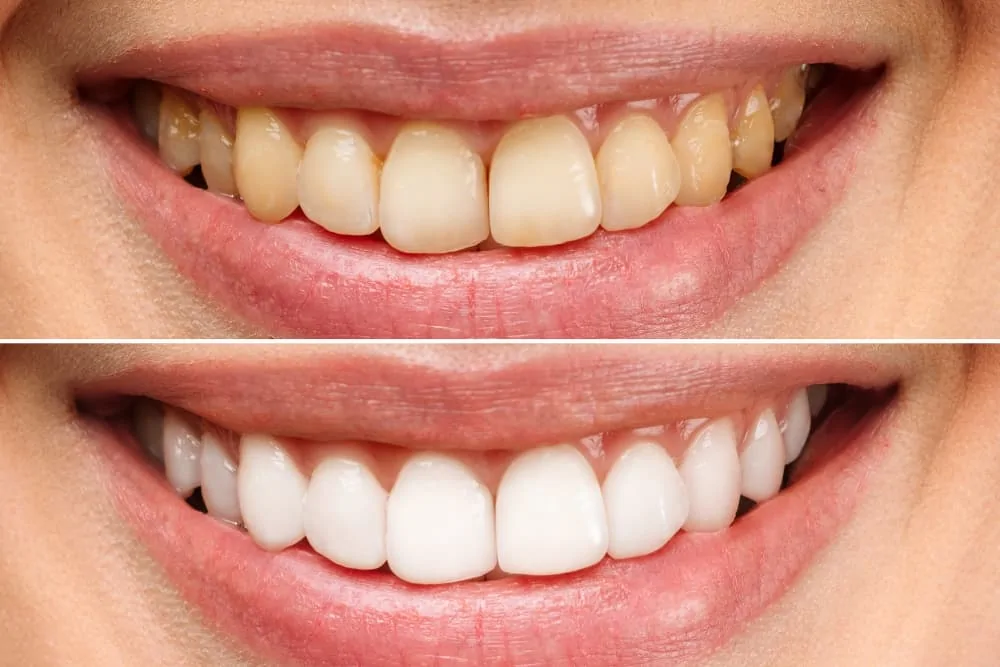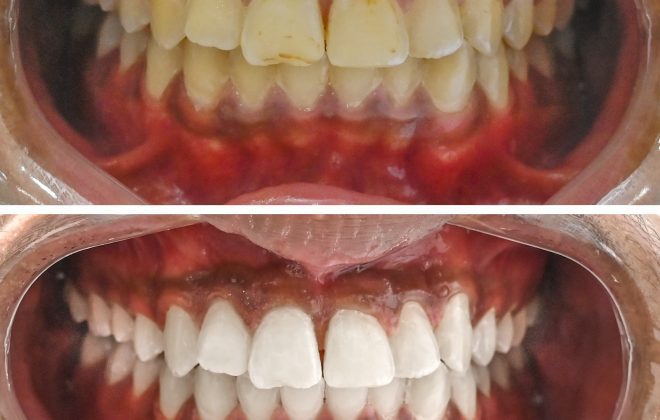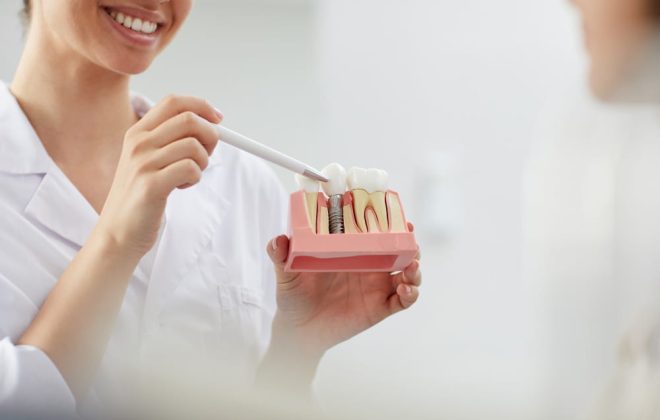Tooth Discoloration, Staining, Yellow Teeth & Treatment
It is irritating for patients to have stained teeth or yellowish teeth when the problem cannot be solved by regular brushing and oral care. In fact, excessive brushing can also cause more tooth discoloration by increasing the number of microscopic cracks on the tooth surfaces.
For an effective tooth cleaning, the treatment should be applied according to the type of stain and the area where it is found. Although teeth whitening can remove stains, the wrong procedure can cause teeth to become opaque.
What Causes Discoloration of one Tooth?
Tooth staining is generally divided into two groups. Intrinsic stains and extrinsic stains. Extrinsic stains are those caused by our habits and the foods we eat during the course of our daily activities. These stains are also relatively easy to remove.
The intrinsic stains are those located on the lower surfaces of the enamel. There are several factors that can cause these stains, such as genetics, drugs used during the development of teeth, aging, prolonged use of antiseptic mouth rinses, and amalgam fillings.
Most Discoloration of Teeth
Different treatments may be needed depending on the type and location of discoloration. Below are the main types of tooth stains and treatment methods that occur on the teeth.
Yellow Teeth:
Yellowing of the teeth is most common among teeth stains. As we age, the tooth enamel thins, which leads to the yellowing color of the dentin layer under the enamel is exposed. However, genetic factors also play an important role in yellow teeth.
Other important yellow teeth causes are the consumption of foods containing high pigment and smoking and alcohol consumption, particularly red wine.
Brown Teeth:
Brown stains on teeth are the most important indicator of inadequate oral care. These stains usually occur on the tooth’s outer surface and can be removed with whitening techniques. Especially cigarette and tobacco consumption are the most important causes of these stains. However, foods containing high pigments, such as coffee tea, red wine, cola, and blueberries, can cause brown teeth.
When you experience excessive fluoride intake, you can develop fluorosis. Persistent white streaks or streaks usually indicate mild fluorosis, while brown, gray, or black spots and pits on the typically uneven tooth surface represent more severe fluorosis. However, fluorosis is only a cosmetic condition. There is no problem with them unless there is another condition causing the rot.
Black Teeth:
Blackening of the teeth means that the tooth cannot take healthy nutrients due to decay or other reasons. In this case, black stains on teeth occur inside the tooth. Black staining can be prevented if the decaying or dying area is treated with a tooth-colored filling material.
In the gingiva, black and gray color formation is often observed due to the exposure of tooth tartar to saliva.
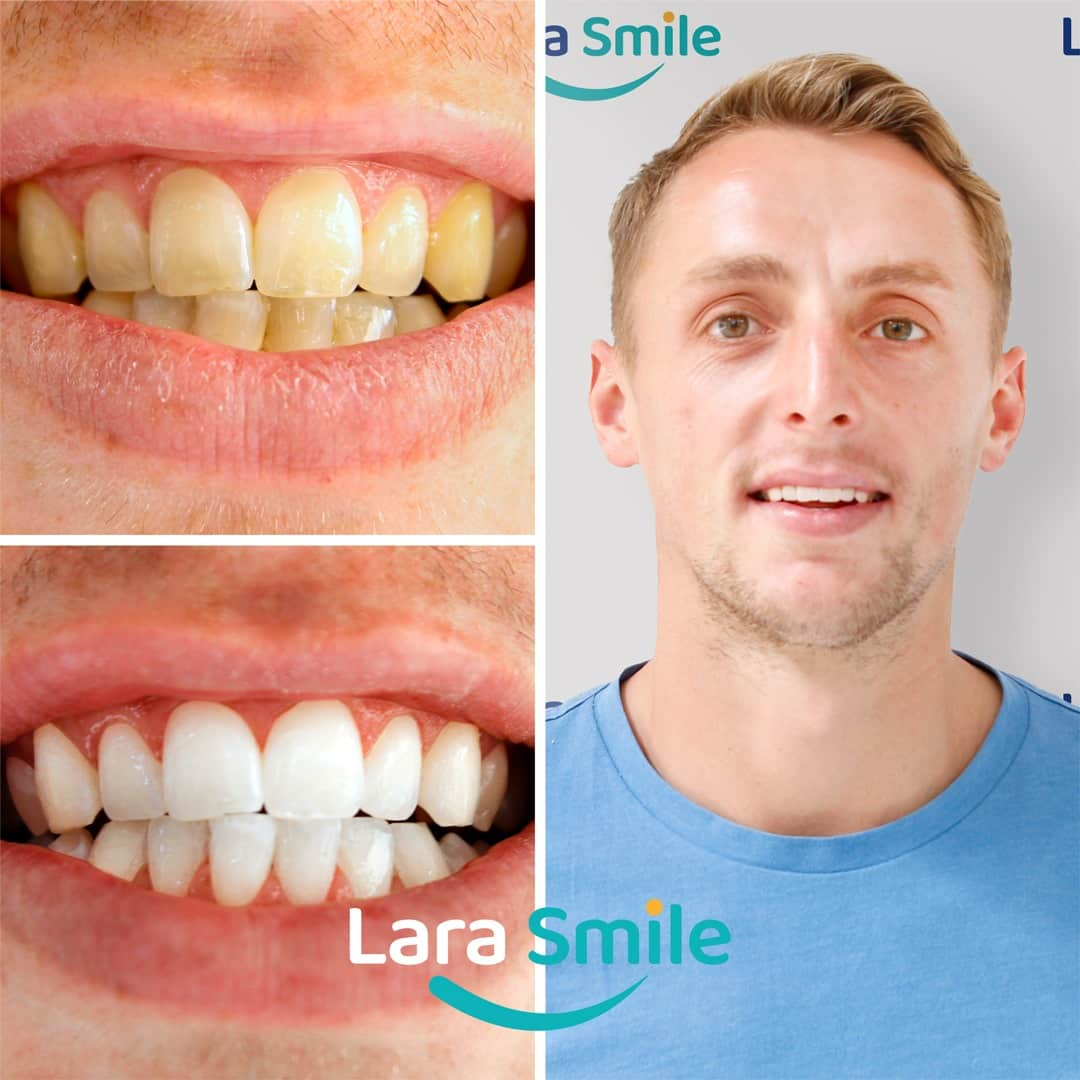
Should I Worry about Stained Teeth?
There isn’t much to worry about when it comes to staining caused by foods you consume on a daily basis. You can remove such stains with a short whitening session. If the staining is caused by plaque formation, you will need to do scaling before whitening.
However, if these stains are formed on the inferior part of the tooth enamel, your dentist will apply different whitening methods depending on the type of stain.
Can Teeth Stains be Removed?
Tooth stains and discolorations can be easily removed under professional supervision without causing any structural damage to the teeth. However, it is not possible to whiten dentures and fillings with whitening methods.
While intrinsic stains can be removed with hydrogen peroxide, extrinsic stains can be easily removed with bleaching treatments. Some stains are not removed by laser teeth whitening methods, and in such cases, dentists intervene locally.
Are Yellow Teeth Healthy?
The majority of yellowed teeth are in good health. But if there is a high level of tartar and plaque formation, they should immediately be removed with mechanical teeth cleaning.
If the yellowing is caused by weakened enamel, dental health can be maintained by protecting the dentin area with veneers.
Can a Discolored Tooth Turn White Again?
Teeth whitening is a non-invasive method that restores the teeth’ natural whiteness without damaging the tooth structure. Having whiter teeth increases hygiene awareness and encourages patients to take better care of them. The reproducibility of this method as well as the fact that it does not require a compelling treatment process in a single session, have made teeth whitening a popular solution.
Nevertheless, improper applications may result in more discoloration. So, professional supervision is vital for these treatments.
What Can the Dentist Do for Discoloration?
A dentist first removes tartar and plaque before whitening if necessary. Then he applies a protective gel to the soft tissues and gums. After all necessary measures are taken, the dentist applies the whitening agent that contains up to %6 percent of hydrogen peroxide.
There may also be local interventions for different types of staining. In these interventions, the whitening agent is applied directly to the stain.
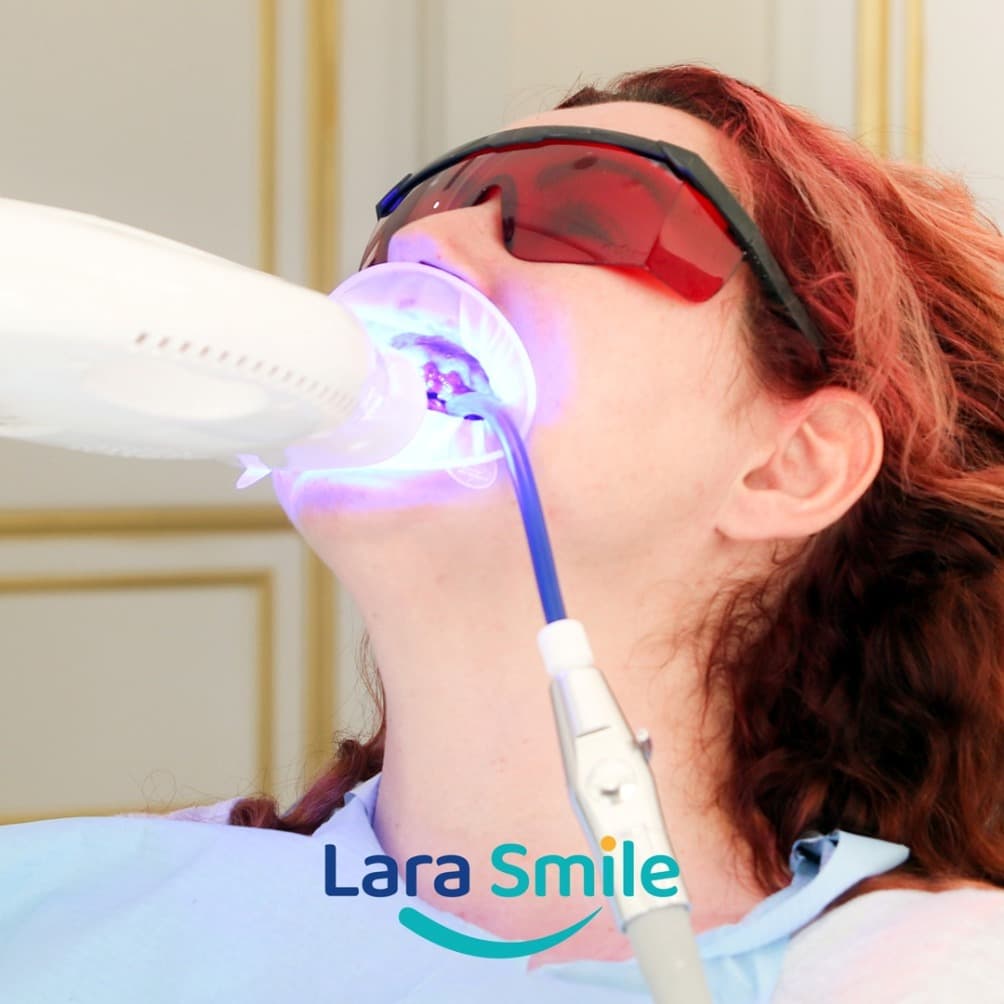
Professional Whitening
In order to determine whether teeth whitening will work, the dentist examines the stains on the teeth dentures, and cavities that cannot be removed with whitening. If complications will lead to an increase in discoloration, the dentist would not whiten your teeth or apply the whitening locally.
One session of professional whitening lasts 45 minutes. It involves protecting the gums with a gel that prevents the whitening agent from coming into contact with the soft tissues and then applying the whitening agent. The final phase of the process uses laser light to ensure that the whitening is applied to the teeth more quickly.
Things to Consider after Teeth Whitening
- Let us remind you again that red-colored and sugar-containing foods are one of the biggest factors in staining teeth.
- If you are consuming these foods and drinks, pay more attention to your oral hygiene.
- Brush your teeth half an hour after consuming food. Brushing right away can cause the acid in the food to damage your teeth. So wait for a while and brush thoroughly.
- Use dental floss to prevent food from accumulating between your teeth.

